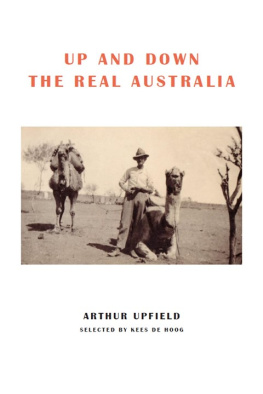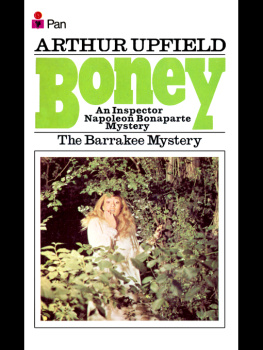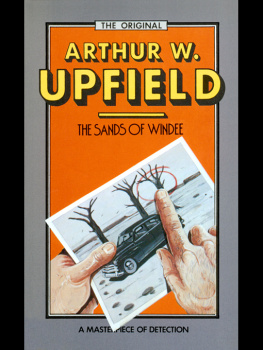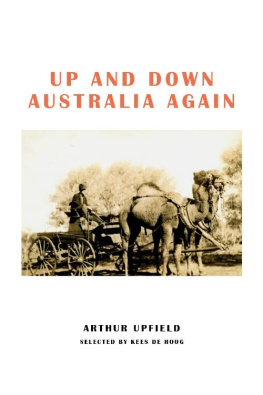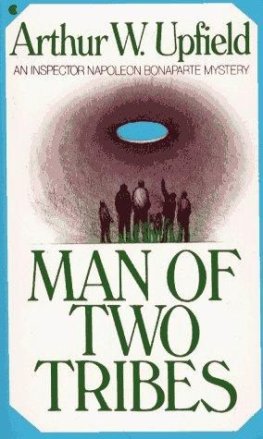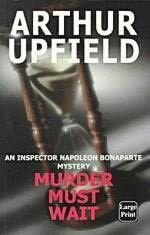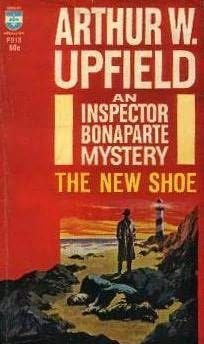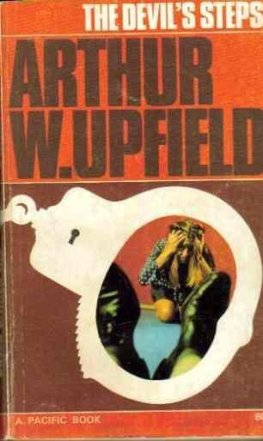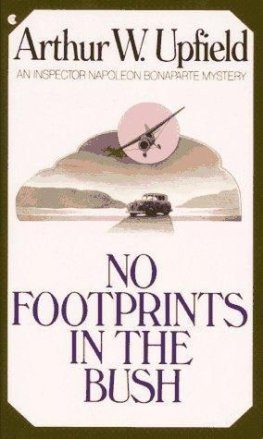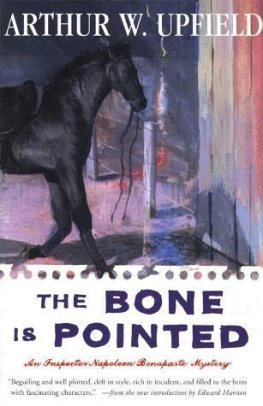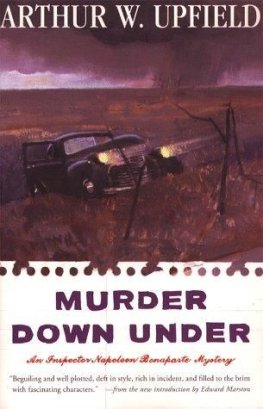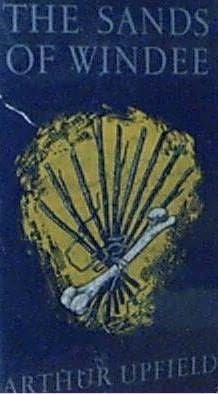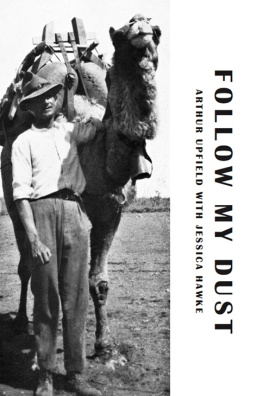Arthur William Upfield is well known as the creator of Detective Inspector Napoleon Bonaparte (Bony) who features in 29 crime detection novels, most set in the Australian outback. He also wrote more than 220 short stories and articles, based on his experiences in the bush between 1911 and 1931.
Up and Down the Real Australia is the second published collection of Upfields short works. Kees de Hoog has selected 45 autobiographical articles, ranging from humorous outback anecdotes to personal experiences at Gallipoli and the Somme during the First World War.
Kees has added The Murchison Murders, Upfields account of how the perfect murder was developed for his second Bony novel, The Sands of Windee; how Snowy Rowles used it to commit at least one, probably three, murders in 1929; how the crime was solved; and what happened at Rowles trial in 1932.
This edition published by ETT Imprint, Exile Bay 2016
ETT IMPRINT
PO Box R1906
Royal Exchange NSW 1225
Australia
This book is copyright. Apart from any fair dealing for the purposes of private study, research, criticism or review, as permitted under the Copyright Act, no part may be reproduced by any process without written permission . Inquiries should be addressed to the publishers.
First published by Lulu Enterprises 2009
Copyright all stories, William Upfield 2016
Copyright Introduction and this Selection Kees de Hoog 2009, 2016
ISBN: 978-1 -925416-43 (eBook)
Contents
Introduction
Arthur Upfield is well known to aficionados of crime detection novels as the creator of the Australian Detective Inspector Napoleon Bonaparte (Bony) who appears in twenty-nine novels written over forty-two years from 1924 to 1966. It is not so well known that Upfield also wrote six other published novels, and many short stories and articles published in newspapers and magazines in Australia and other countries.
He was born in 1890 into a family of drapers at Gosport on Portsmouth Bay in England. An avid reader of boys adventure magazines, at school he did well only in subjects that took his interest. Apprenticed to a firm of estate agents, auctioneers and surveyors just before his sixteenth birthday, he was more interested in writing novels and other, more daring, escapades. He once claimed his father sent him to Australia in despair, saying: It is so far away that you will never save enough money to return,1 but it is more likely he wanted to go.2
Soon after arriving in Adelaide in 1911, Upfield went to the outback where he worked in a variety of jobs including fence building, boundary riding, droving and opal digging. He quickly developed a lasting passion for the Australian bush that laid the foundations for the rest of his life,3 and eventually carried his swag to all the mainland states and the Northern Territory.
On the outbreak of World War I in 1914, he joined the Australian Imperial Forces and served in Egypt, Gallipoli, England and France. Returning to Australia in 1921 with a wife and child, and probably still suffering from shell shock, he went bush again soon afterwards as he could not tolerate working in a Melbourne factory and missed the outback lifestyle.
Upfield had continued to write desultorily, and in 1924 was persuaded to have a go at writing professionally, drawing on his experiences in the bush.4 After four novels and a number of short articles and stories had been published, he left the bush in 1931 to join his family in Perth, and to write full time. Two years later he moved to Melbourne to join The Herald newspaper, but resumed freelance writing after about six months.
His production of short stories and articles was most prolific between 1931 and 1940 as he sought to supplement the income from his novels. Of more than 220 of his published short stories and articles I have found, about 170 were published during those nine years.
Upfield joined Australian military intelligence as a censor during World War II. With much less time for writing, he sent some Bony novels to a United States publisher in 1943. Americans had become interested in Australia through their troops visiting and stationed here during the war, and the books were very popular. Within a few years most of the earlier Bony novels were published there, as were those he wrote later. The extra sales allowed Upfield to live comfortably from writing mainly Bony novels until his death in 1964.
For this anthology I have selected forty-five autobiographical articles based on his life experiences during the twenty years after he first arrived in Australia, plus The Murchison Murders. Many of the articles are anecdotes, while others reflect fond memories and observations. All but nine were first published in 1934; eight were earlier, and the other in 1935. The previous publication details I have so far uncovered for each article are listed under the heading Sources at the end.
My selection of Upfields short stories, Up and Down Australia, was published last year.5 As a companion volume, this selection has been given a similar title. The words the Real were inserted to reflect his view, expressed several times in these articles, that the interior of the Australia the outback or the bush is the part of Australia that he cherished. He put it much more eloquently when he wrote:
Cities bore me. Farming country leaves me cold. Neither cities nor the farming country is Australia, the real Australia adequately described only by the immortal Lawson... There are dozens of Melbournes in the world, a dozen Sydneys. There is only one Australia, a virgin, living Australia unspoiled by brick and cement, axe and plough, the Australia which can reveal a thousand facets of beauty, and never fail to reveal at least one.6
With the extra words the title also reflects the autobiographical flavour of the selection.
This anthology does not constitute an autobiography of Upfield. He did, in fact, start writing an autobiography in 1934 with early drafts called The Tale of a Pommy.7 He finished it in 1938, renamed Beyond the Mirage,8 but he could not get it published. It covers roughly the same period as this selection and contains a number of very similar anecdotes. I suspect he wrote the articles first and later incorporated many of them into Mirage. Upfields official biography, Follow my Dust, by his then partner Jessica Hawke, was published in 1957.9 It also includes many of the same anecdotes and themes but, like Mirage, it includes no details of his war service. In addition, it makes only one passing reference to his marriage, and none to his son, and there are many inconsistencies with Mirage.
Arthur William Upfield: A Biography by Travis Lindsey was published in 2005. It is an academic thesis that gives a comprehensive account of Upfields life, works, philosophy and outlook, and positions him as a writer in the context of the first half of 20th century Australian history ... who dealt with issues of Aboriginality at a time when this was an under-theorized area of critical knowledge. Lindseys biography is thoroughly researched and is undoubtedly much more factually accurate than either Mirage or Dust.10
Another biography, Arthur W. Upfield: Life and Times of Bonys Man by Andrew Milnor, has been published recently. It is also an academic treatise, and proposes Australia and Arthur Upfield, both caught between immigration and nationhood, walked parallel routes [during the early 1900s] from beginning stage though to maturity and success, where each arrived at a place coincident with their characters, skills and communities.11
The biographies by Lindsey and Milnor refer to and draw on a number of articles in this collection, but do not quote or describe them at length. It therefore makes sense to read these articles
Next page
